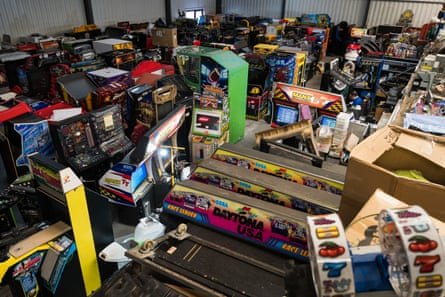Some of us remember the original coin-op arcade machines from the 80s and 90s which often had cutting edge graphics for the time, much better than what one could get at home. They eventually got replaced by home gaming consoles and PCs, although modern versions still exist at amusement parks and the graphics on these are now pretty much on par with what one can get at home.
Play Leisure are the heroes who restore those retro machines.


 www.theguardian.com
www.theguardian.com
Play Leisure are the heroes who restore those retro machines.
For a generation of players, these colourful cabinets house not just ailing electronics, but formative memories. Meet the people who save them from landfill


Infinite lives: the company saving old arcade machines
For a generation of players, these colourful cabinets house not just ailing electronics, but formative memories. Meet the people who save them from landfill
